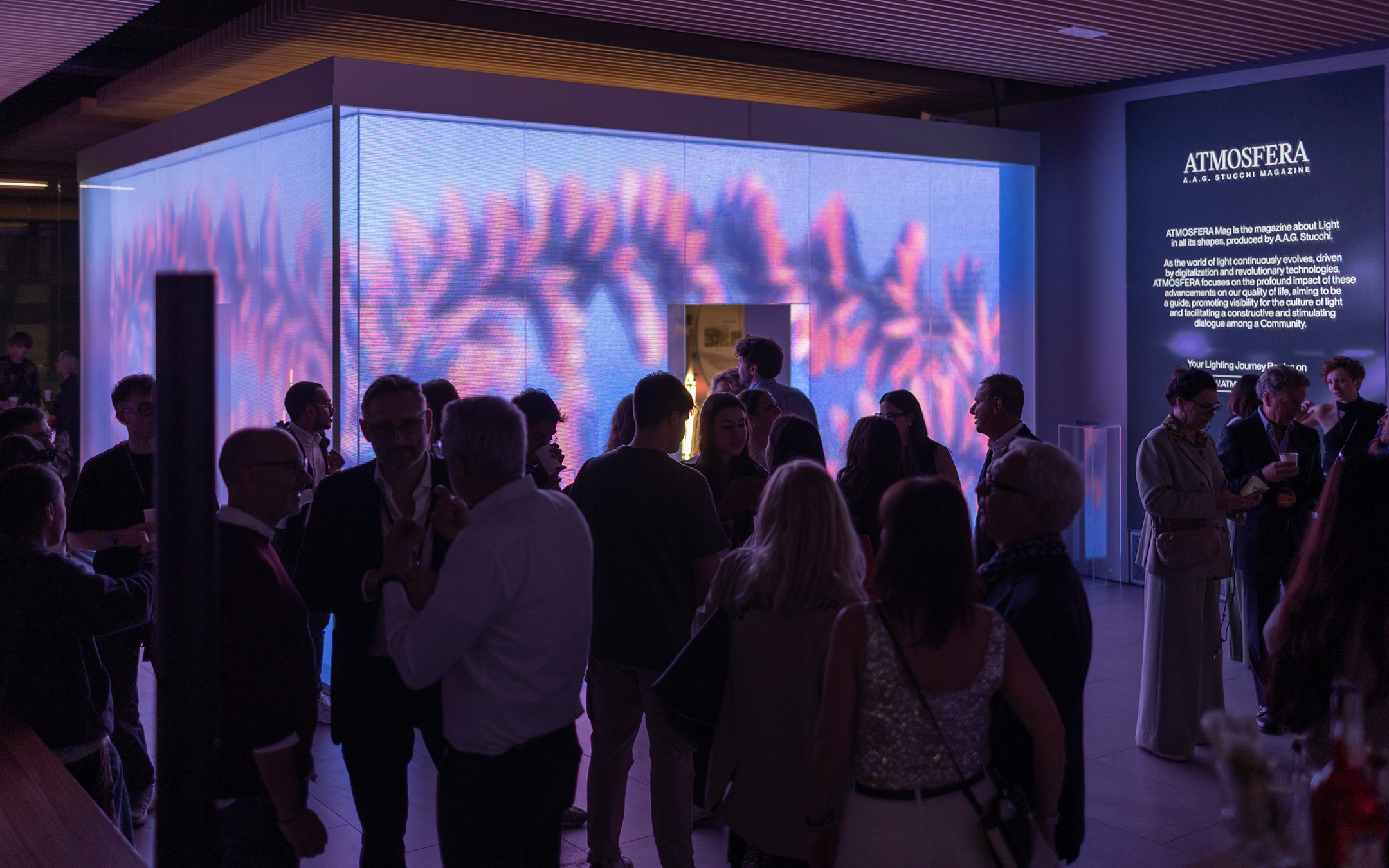Elisa Rocchi is an Italian designer and lighting designer, winner of the AIDI Mario Bonomo Award 2022 as a young lighting designer under 40. Graduated in architecture in Ferrara, Rocchi has honed her skills with international experiences. Her passion for lighting, inspired by art, has led her to focus on the technological aspect of projects. Since 2017, she has been an Intermediate Lighting Designer at Lichtvision Design, one of the largest lighting studios in Germany, where she contributes to global projects.
You laid the foundations of your career in Italy with a degree in architecture from Ferrara and then continued your studies abroad. When did you first become interested in lighting design?
My passion for lighting mainly stems from the art world. I’ve always been captivated by how light art can completely transform or even dematerialize a space. Works like Lucio Fontana’s ‘Spatial Concepts’ or Christopher Bauder’s exhibitions in Berlin definitely marked a turning point in my professional journey. During my university years, whenever I visited a building or worked on a new project, I increasingly focused on lighting rather than architectural aspects. So, after graduating, it felt natural to merge my architectural studies with my love for light and move into architectural lighting.

Lichtvision Design, which welcomed you, was founded in 1997 by Karsten Heling, Raoul Hesse, Thomas Muller, and Carla Wilkins. It’s a diverse team from many countries, working primarily on large-scale projects, complex infrastructures, and vast public initiatives. That must be a significant achievement for you…
When I applied for an internship in 2017, I knew little about lighting, a bit of German, and nothing about working in an international environment. Lichtvision gave me the chance to grow and learn. In these five years, I’ve worked with internationally renowned architects and designers on a wide range of projects across four continents. What I love about Lichtvision is that we work on projects of all scales and at every stage. The size of our studio, one of the largest in Germany, allows us to have a wide range of in-house expertise and specialized professionals. For instance, we have an internal engineering department we collaborate with on our most technologically advanced projects. It’s quite rare for an independent lighting studio to have this scale and resources.
How have your cultural background and origins helped you?
Italian universities definitely provided me with a solid foundation and a strong drive to succeed. The Italian tradition in art and design is globally recognized and valued, which is an advantage in my field. However, the education system in Italy can be quite academic and self-referential, so I’m glad to have broadened my education with experiences abroad – my current position in Berlin, an internship in London, and a Master’s in Stockholm. It was a way to add new perspectives and enrich my professional experience.

Merging design with the technical aspects of light design is a significant part of your daily work, under the guidance of your ‘superior’ Carla Wilkins. What are your current research focuses and objectives?
We’re currently working on the restoration of the Staatsbibliothek (State Library) in Berlin, a stunning modern architecture by Hans Scharoun, known to many from Wim Wenders’ film ‘Wings of Desire’. It’s a complex project where we need to respect its historical and artistic significance while ensuring functionality and accessibility. The building is nearly 80,000 square meters, housing hundreds of reading spaces, conference rooms, exhibition areas, offices, a cafeteria and extensive outdoor public areas. Concurrently, we’re redeveloping some commercial spaces in Germany, where the main challenge is to develop new customer experiences in an era where the future of retail remains uncertain and challenging. All this while ensuring affordability and easy implementation of details.

What’s it like being a woman lighting designer in Germany?
In Northern Europe, the profession of a lighting designer is more recognized and, perhaps because of this, is increasingly pursued by women. In my current team, women are not only in the majority but also occupy all positions, from intern to director. This isn’t an exception but the result of social policies keeping the national female employment rate high and many significant initiatives like Women in Lighting that have highlighted brilliant female professionals in the lighting industry.






